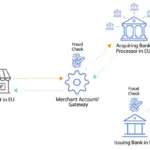The financial industry is undergoing a dramatic shift as younger generations—Millennials and Gen Z—reshape how money is managed, saved, and invested. Unlike previous generations, these digital natives expect financial experiences that are interactive, personalized, and engaging. To meet these expectations, financial institutions and fintech companies are turning to gamification—the use of game-like elements in non-game contexts—to transform how people learn about and interact with money.
What Is Gamification in Finance?
Gamification in finance applies techniques commonly found in games—such as points, challenges, leaderboards, and rewards—to financial products and services. The goal is simple: make financial management more engaging, educational, and rewarding.
Instead of viewing money as a complex or intimidating topic, users experience finance as an interactive journey. From budgeting apps that reward savings goals to investment platforms that use simulations and badges, gamification turns financial behavior into a fun, goal-driven experience.
Why Gamification Matters for the Next Generation
1. Financial Literacy Through Engagement
Many young people find traditional financial education dull or confusing. Gamified apps turn learning into an interactive experience. For example, users might earn badges for completing lessons on credit management or receive progress tracking as they improve their budgeting habits. This approach not only enhances knowledge but also encourages consistent financial learning.
2. Motivation and Positive Reinforcement
Gamification uses psychological triggers like rewards and achievements to encourage responsible behavior. For instance, apps like Revolut and Monzo offer savings challenges, while Acorns automatically invests spare change from everyday purchases. These systems motivate users to develop healthy financial habits—such as saving regularly or paying bills on time—by offering tangible rewards or progress feedback.
3. Bridging the Gap Between Finance and Entertainment
Younger consumers are accustomed to interactive, gamified digital environments. Integrating similar experiences into finance helps bridge the gap between entertainment and financial responsibility. Platforms that include features like virtual leaderboards, streak tracking, or social competition make financial activities more relatable and rewarding.
4. Encouraging Investment Among Young Users
Investment platforms are increasingly using gamified elements to attract new investors. Apps such as Robinhood, Public, and Freetrade simplify complex financial concepts through visual progress tracking, real-time feedback, and educational challenges. This lowers the barrier to entry for first-time investors, making the process both accessible and exciting.
Examples of Gamification in Financial Products
- Budgeting and Saving Apps: Tools like YNAB (You Need a Budget) and Qapital use goals and rewards to help users manage money effectively.
- Credit-Building Platforms: Apps such as Kikoff or Grow Credit gamify credit improvement by tracking progress and offering milestones for responsible spending.
- Financial Education Games: Platforms like Zogo or Finimize turn financial learning into quizzes and mini-games that reward users for mastering key concepts.
These innovations prove that financial management doesn’t have to be boring—it can be as engaging as playing a favorite mobile game.
The Technology Behind Gamified Finance
The rise of gamification in finance is powered by a combination of AI, behavioral analytics, and mobile app design. AI algorithms personalize challenges and recommendations based on individual spending habits, while analytics help platforms measure engagement and adjust reward systems.
Moreover, integration with social media and digital wallets makes gamified finance accessible anywhere, allowing users to track progress and share achievements seamlessly.
Challenges and Ethical Considerations
While gamification can drive engagement, it must be implemented responsibly. Overuse of game mechanics may encourage risky behaviors, such as impulsive investing or overspending to “win” rewards. Financial institutions must strike a balance between engagement and responsibility, ensuring that gamified features truly promote financial well-being rather than mimic addictive gaming habits.
Transparency, education, and clear reward systems are essential to ensure users benefit sustainably from these tools.
The Future of Gamified Finance
The next evolution of gamification will blend AI-driven personalization, augmented reality (AR), and metaverse-based financial education. Imagine a virtual world where users learn investing by simulating stock trades or earn digital rewards for sustainable spending choices.
As the boundaries between gaming, finance, and digital lifestyle blur, gamification will play a central role in shaping how future generations build financial confidence and discipline.
Conclusion
Gamification is redefining how people—especially younger generations—interact with money. By combining technology, psychology, and design, fintechs and financial institutions are making finance more accessible, educational, and enjoyable.
Beyond just fun and rewards, gamified finance has the power to build lasting financial habits, enhance literacy, and foster a generation that views money management not as a chore, but as an empowering, lifelong game.
Would kakak like me to make this article more formal for publication (e.g., for a magazine or journal) or more casual and catchy (for online blogs or LinkedIn readers)?
What Is Gamification in Finance?
Gamification in finance applies techniques commonly found in games—such as points, challenges, leaderboards, and rewards—to financial products and services. The goal is simple: make financial management more engaging, educational, and rewarding.
Instead of viewing money as a complex or intimidating topic, users experience finance as an interactive journey. From budgeting apps that reward savings goals to investment platforms that use simulations and badges, gamification turns financial behavior into a fun, goal-driven experience.
Why Gamification Matters for the Next Generation
1. Financial Literacy Through Engagement
Many young people find traditional financial education dull or confusing. Gamified apps turn learning into an interactive experience. For example, users might earn badges for completing lessons on credit management or receive progress tracking as they improve their budgeting habits. This approach not only enhances knowledge but also encourages consistent financial learning.
2. Motivation and Positive Reinforcement
Gamification uses psychological triggers like rewards and achievements to encourage responsible behavior. For instance, apps like Revolut and Monzo offer savings challenges, while Acorns automatically invests spare change from everyday purchases. These systems motivate users to develop healthy financial habits—such as saving regularly or paying bills on time—by offering tangible rewards or progress feedback.
3. Bridging the Gap Between Finance and Entertainment
Younger consumers are accustomed to interactive, gamified digital environments. Integrating similar experiences into finance helps bridge the gap between entertainment and financial responsibility. Platforms that include features like virtual leaderboards, streak tracking, or social competition make financial activities more relatable and rewarding.
4. Encouraging Investment Among Young Users
Investment platforms are increasingly using gamified elements to attract new investors. Apps such as Robinhood, Public, and Freetrade simplify complex financial concepts through visual progress tracking, real-time feedback, and educational challenges. This lowers the barrier to entry for first-time investors, making the process both accessible and exciting.
Examples of Gamification in Financial Products
- Budgeting and Saving Apps: Tools like YNAB (You Need a Budget) and Qapital use goals and rewards to help users manage money effectively.
- Credit-Building Platforms: Apps such as Kikoff or Grow Credit gamify credit improvement by tracking progress and offering milestones for responsible spending.
- Financial Education Games: Platforms like Zogo or Finimize turn financial learning into quizzes and mini-games that reward users for mastering key concepts.
These innovations prove that financial management doesn’t have to be boring—it can be as engaging as playing a favorite mobile game.
The Technology Behind Gamified Finance
The rise of gamification in finance is powered by a combination of AI, behavioral analytics, and mobile app design. AI algorithms personalize challenges and recommendations based on individual spending habits, while analytics help platforms measure engagement and adjust reward systems.
Moreover, integration with social media and digital wallets makes gamified finance accessible anywhere, allowing users to track progress and share achievements seamlessly.
Challenges and Ethical Considerations
While gamification can drive engagement, it must be implemented responsibly. Overuse of game mechanics may encourage risky behaviors, such as impulsive investing or overspending to “win” rewards. Financial institutions must strike a balance between engagement and responsibility, ensuring that gamified features truly promote financial well-being rather than mimic addictive gaming habits.
Transparency, education, and clear reward systems are essential to ensure users benefit sustainably from these tools.
The Future of Gamified Finance
The next evolution of gamification will blend AI-driven personalization, augmented reality (AR), and metaverse-based financial education. Imagine a virtual world where users learn investing by simulating stock trades or earn digital rewards for sustainable spending choices.
As the boundaries between gaming, finance, and digital lifestyle blur, gamification will play a central role in shaping how future generations build financial confidence and discipline.
Conclusion
Gamification is redefining how people—especially younger generations—interact with money. By combining technology, psychology, and design, fintechs and financial institutions are making finance more accessible, educational, and enjoyable.
Beyond just fun and rewards, gamified finance has the power to build lasting financial habits, enhance literacy, and foster a generation that views money management not as a chore, but as an empowering, lifelong game.















